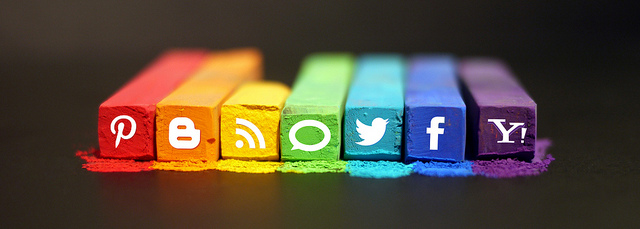The Internet: How It Shapes Us

Then came the Internet, and with it, the revolutionization of media. Today, the Internet is so widely used that it has become the primary way many people communicate. Everywhere you look, there is bound to be someone on his phone, tablet, or laptop.
Senior Joshua Namba says his Internet use spans at least five hours, and he’s not alone. Teenagers especially embrace internet based media through the use of social media, YouTube, and games.
One reason why people are attracted to the Internet is the diversity it offers. With a simple click or swipe, one can have a glimpse of the daily lives of people living across the globe, or watch a person scream their head off while playing a horror game. Counselor Danford Chang says, “[I get my news] through my Youtube or Instagram app. All my news feeds, I get them through an app.” The ubiquity of mobile devices is another reason why people have become more reliant on the internet. Sophomore Dru Pang says that he started to use the Internet much more when he received a smartphone in the seventh grade.
The internet has also changed the way people work and learn. Librarian Arlene Huster says, “My job is surrounded by working at the computer. It’s made [my work] more efficient… because it’s made things so much easier.” As for learning, students often go online to search for answers and help for their school work rather than ask a teacher. For example, Chang said that SAT prep courses are now offered on Khan Academy, a non-profit that offers free video lessons online.
For many students, Internet-based media has become the only kind of media that they consume. When asked whether he would rather live without cable or WIFI, Pang answered, “Cable, all the way”. Likewise, Namba said, “Most of either work or free time is [spent] through [internet] media.”
The Internet has also changed the way people interact with each other. Huster states, “Well, in some ways it’s increased it, because my son is not here in the island most of the year, so we text a lot more, so we can keep in communication much easier, because it’s so easy to do that.” The internet has also changed the way people acquire knowledge. Middle school principal George Honzaki said, “The world is a lot smaller and answers to questions that once required experts in the field no longer [require them.]”
But with every change, there are downfalls, Honzaki warned. “Students today are very plugged in and tend to be less skilled socially,” he said. Huster also added, “It’s kind of sad that kids today spend more time on their [mobile] devices than interacting face-to-face, being more physically active, or going outside and enjoying nature.” Freshman Samantha Matsunaka admitted that she has a hard time relating with her family through social media because her family is not very tech-savvy.
When asked to compare his childhood to that of this generation of teenagers, Chang said, “I definitely think the childhood I grew up in was a lot better, a lot more active, [and] you were a lot less dependent on social media. I remember we would just go out after school and just go down to the stream or the park and find things to do.”
Film and photography teacher Sean Malinger summed up the irony of social media by saying, “If we are not careful, this ultra-connectedness can lead to a disconnectedness…We must be mindful of our current real existence, and also of our future and eternal one. If we are more cognizant of these things, we would ask ourselves, ‘What effect will what I do in and with the [digital world] have on real people living in an [analog] world?’ How our lives address that question affects not only how we learn, but how we consume and produce media, and ultimately how we live.”
